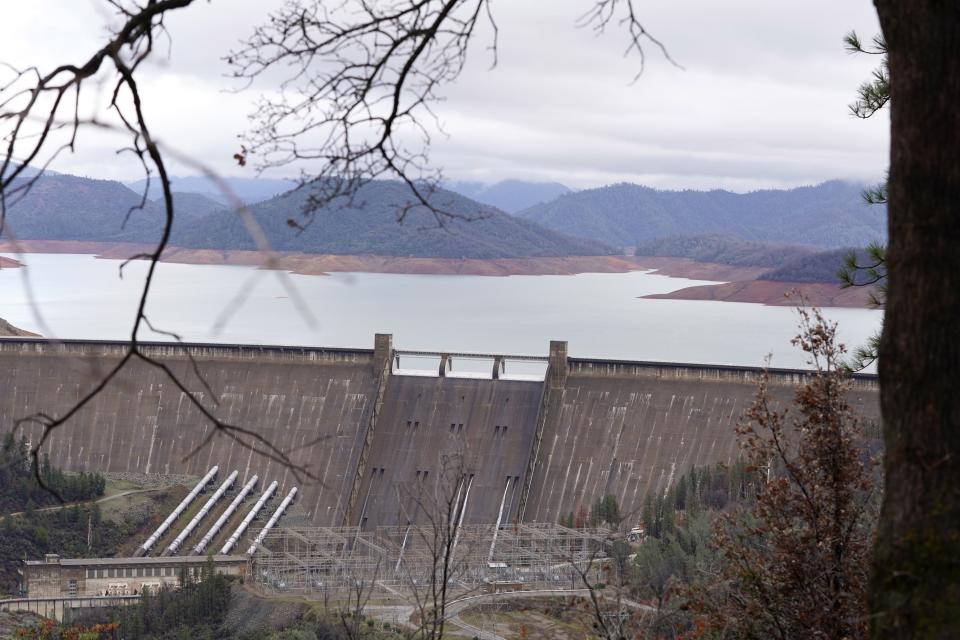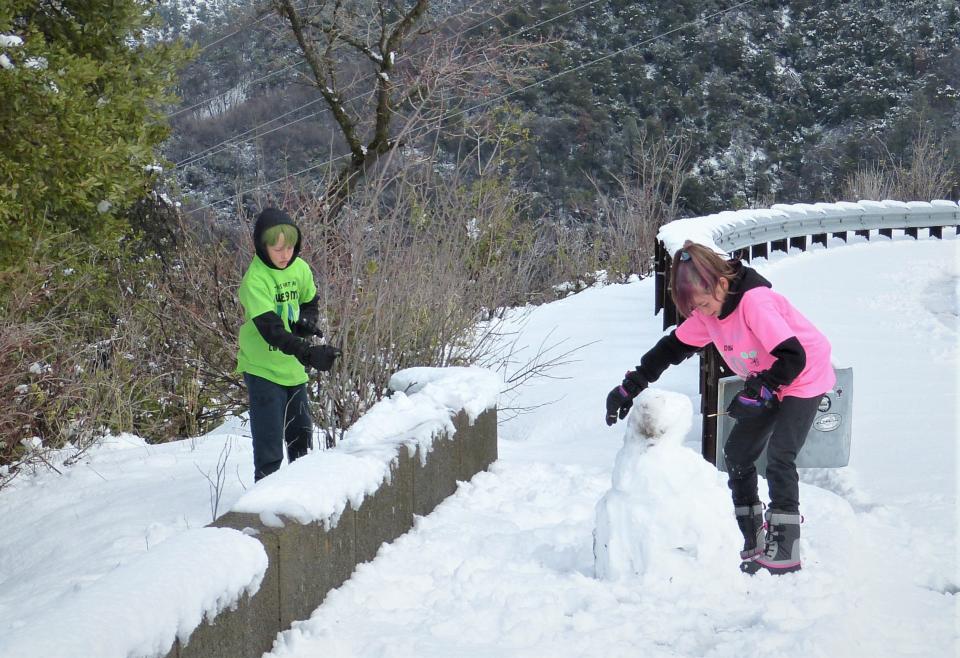Will Shasta Dam open spillway gates as more rain, snowmelt raise Lake Shasta water level?
It may be hard to believe after all the snow and rain that has fallen ― and keeps falling ― on the North State this winter, but Lake Shasta water levels are still lower than normal for this time of year.
That could change with more storms that blew through the North State earlier this week ― and more rain expected next week. Predictions about the amount of water released through Shasta Dam later in the year, as snow melts, could also change.
So far in 2023, the North State has had a good soaking.
Since Dec. 1, 2022, Lake Shasta has risen more than 100 feet and on Thursday was 50 feet from the full mark. When the lake is full, the water level is at 1,067 feet above sea level, said Don Bader, area manager for the U.S. Bureau of Reclamation, which operates the dam.
The lake has risen 20 feet in the past two weeks, according to the California Department of Water Resources. Bader said next week's storms are forecast to raise the lake another 15 feet.
At one point during Tuesday's storm, 73,762 cubic-feet per second of water was flowing into the lake. Put another way, that would be almost 2 billion gallons of water an hour flowing into the lake. During the same period, 179 cubic-feet per second was being released from Shasta Dam, according to state statistics.

After all that, the amount of water in Lake Shasta on Thursday was still below its historical average for the date. It was at 93% of average, according to the state.
January brought warm, wet storms. All told, Redding received 9.26 inches of rain that month, said meteorologist Corey Mueller at the National Weather Service in Sacramento.
February was drier, with 3.95 inches of rain, Mueller said. Then on Feb. 24, 5 inches of snow fell in the Redding area.
That's more than the 4 inches we got in January, February and March 2022, combined, Bader said.
The National Weather Service recorded just under 3 inches of rain at the Redding Regional Airport on Tuesday. And 13 inches of rain fell at Shasta Dam from March 12 to March 14, according to the state.
March rain levels are expected to surpass February's totals as more warm storms roll over western Shasta County. Add to that snowmelt from the March 9 five-hour snowstorm ― 5 inches of snow fell at the Sundial Bridge ― and you've got the makings of a wet winter.
So, could it be that Shasta Dam will make history again? Will it open its gates at the top of the spillway to let water flow?

Could Shasta Dam spillways open?
More water is definitely on the way, said meteorologist Craig Shoemaker, also with the weather service. The agency predicted as much as six inches of rain through Tuesday near the dam.
But it appears the dam will surpass those totals.
That doesn't mean there will be enough water to go over Shasta Dam’s spillway gates as snow melts later in the year, Bader said.
As of March 15, Lake Shasta was 70% full, below the 93% typical of this time of year, according to the California Department of Water Resources.
Even if the lake does fill to 78% by next week, there's plenty of space for more rainwater and snowmelt, Bader said. “We have over a 1.5-million-acre feet of storage room available for all the upcoming storms."

While the Sacramento Valley, from Lake Shasta to Sacramento, is getting a much-needed wet year, as of the week of March 5, most of the rain fell south of both Trinity Dam and Shasta Dam, he said. "As a result, we have ample room for the upcoming storms and are encouraged that we're getting more storage in both reservoirs.”
While areas that drain into Lake Shasta have been drier this winter than the amount of rain and melted snow in Redding, the amount of liquid water they received this water year ― Oct. 1, 2022 to March 9 ― is still above normal, Shoemaker said. Lake Shasta received 44.74 inches of rain and melted snow. The Sims area which drains into Lake Shasta, located 10 to 15 miles north of the lake, got 54.3 inches.
“Snowpack is even better: 100% to 200% of normal,” Shoemaker said. That snow will hopefully melt slowly and trickle south down the river through the valley, reducing fire risk in late spring and summer.
Shoemaker said he expected rain and snowmelt levels in northern Shasta County, including areas that drain into Lake Shasta, to go above normal by the second half of this week.
Shasta Dam opened its spillway in 2017
The last time water went over the Shasta Dam spillway was Wednesday, Feb. 22, 2017. It was an event the public had not seen in 19 years.
From Jan. 1 to Feb. 22, 2017, the Redding area near Lake Shasta got 18.77 inches of rain and 3 inches of snow, Mueller said.
"We had 14 of 18 spillway outlet valves within the spillway open," Bader said. "The lake was 6 feet from the top."
At that time, Bader and his staff tested the overflow spillway drum gates, "which would be used if needed, to ensure they would be ready for operation if we needed to go to the next step" in flood control, he said.
That didn't happen.
"We were able to continue using the spillway outlet valves instead during" flood operations, Bader said.
At the time, the U.S. Bureau of Reclamation invited local officials and members of the press to see the spillway gates open and water come gushing out.
“Very, very impressive. That’s part of history right there," said Michael Brown, then operational supervisor for the Rio Alto Water District in Cottonwood. "I’ve always been impressed with the power of water anyway."
Jessica Skropanic is a features reporter for the Record Searchlight/USA Today Network. She covers science, arts, social issues and news stories. Follow her on Twitter @RS_JSkropanic and on Facebook. Join Jessica in the Get Out! Nor Cal recreation Facebook group. To support and sustain this work, please subscribe today. Thank you.
This article originally appeared on Redding Record Searchlight: Will Shasta Dam open spillway gates after historic California storms?

 money
money 


















